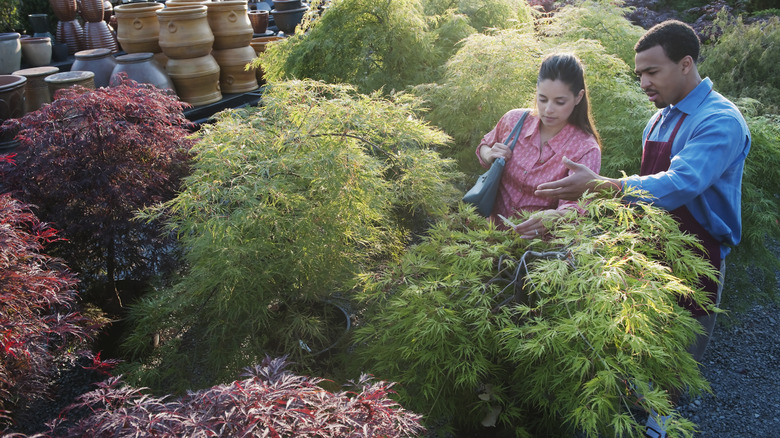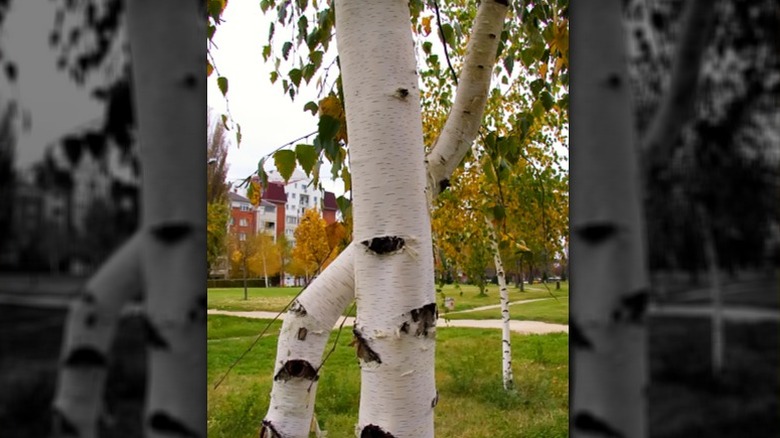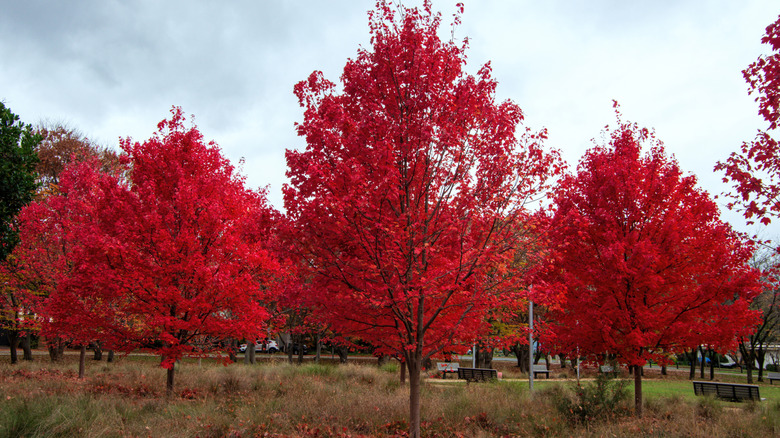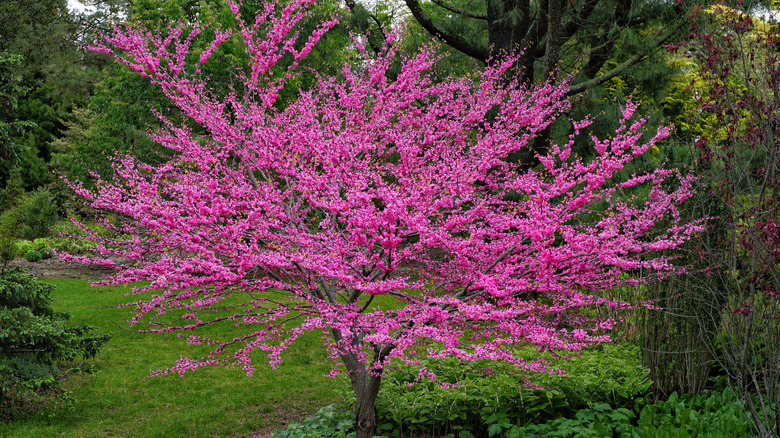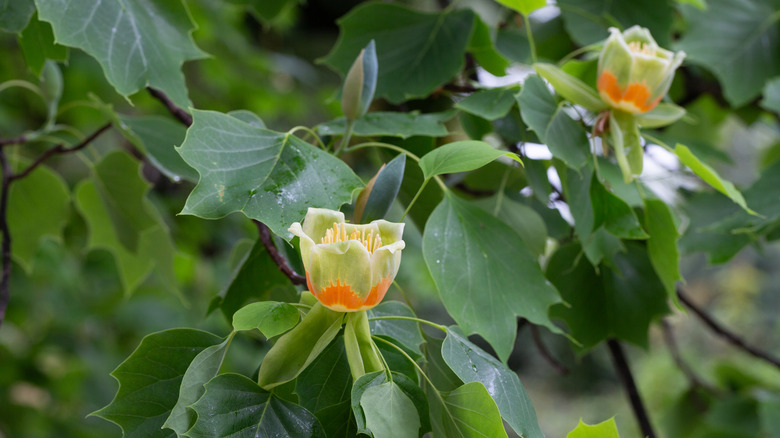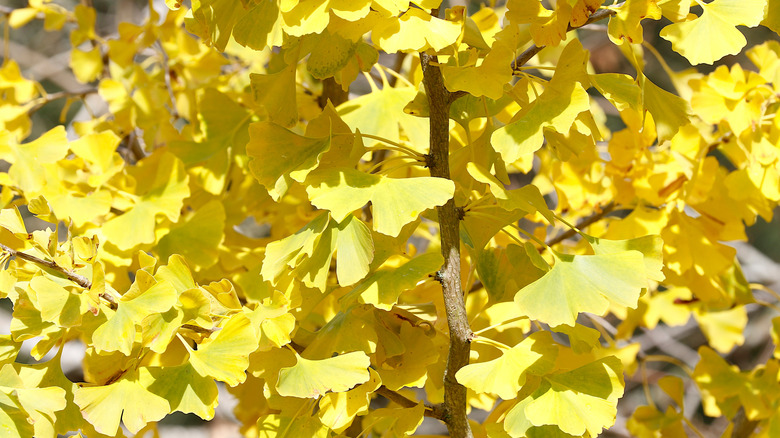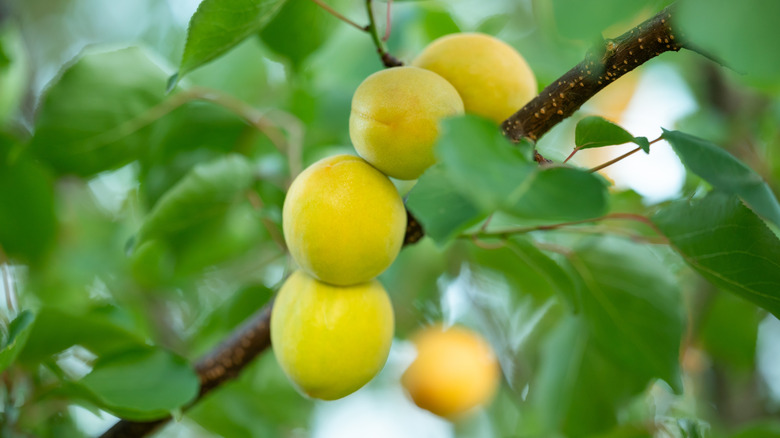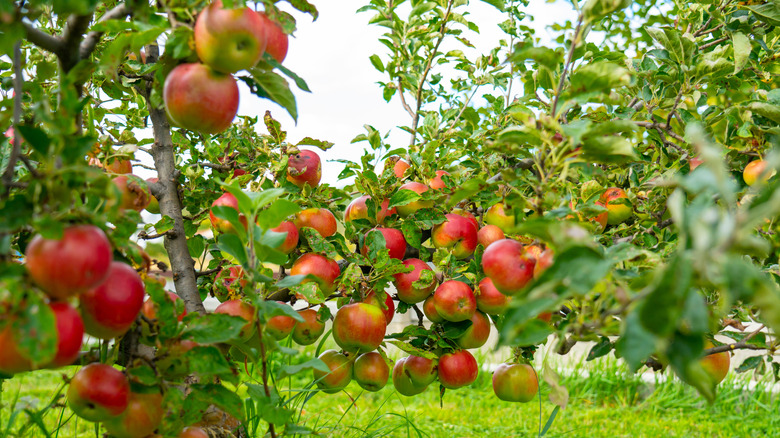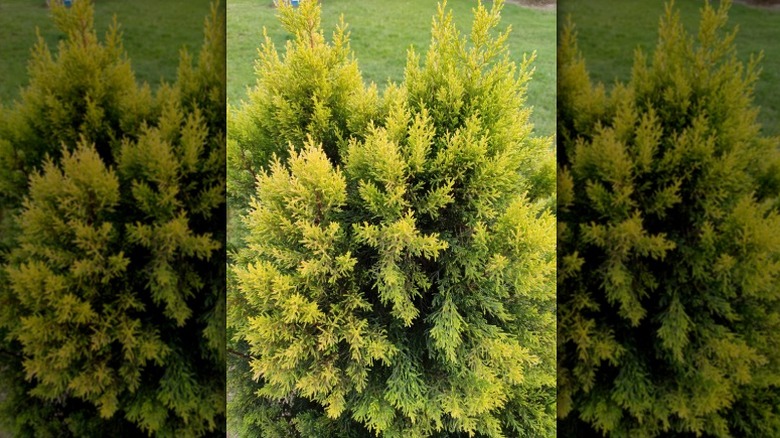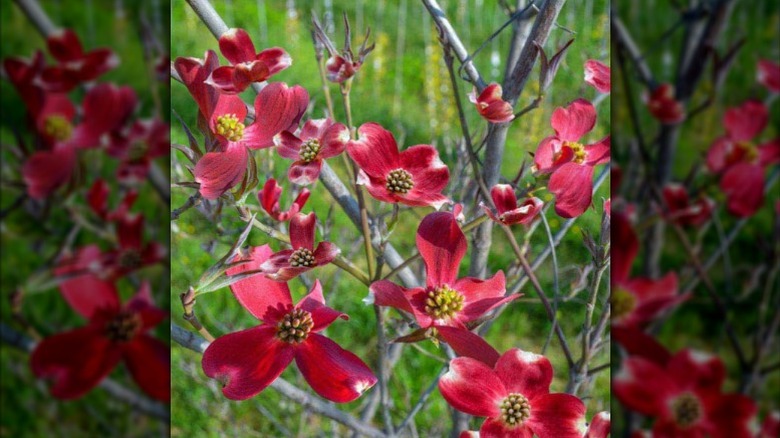Our 9 Favorite Trendy Trees For 2025
Every year, plant breeders are busy creating new hybrids and cultivars that they hope will take the horticultural industry by storm. They also have avid gardeners and plant lovers flocking to nurseries and garden centers to grab a few of the newest varieties. Many of the trendy new species of trees for 2025 have been bred to not only be attractive but also to suit different climates and growing conditions. There's a huge focus on trees suitable for smaller spaces as demand rises. This is why many new varieties are small trees that won't overtake your yard.
In addition, breeders are focused on creating cultivars that have better drought tolerance and less maintenance requirements. After all, gardeners usually have busy lives away from their yards but still want to enjoy that feeling of accomplishment when the garden flourishes, even in their absence. On top of that, plant breeders also focus on creating new hybrids with better pest resistance but also add a stunning and vibrant aesthetic to your garden. To get you excited about adding some new trees to your yard, take a look at our favorite trendy trees for 2025, which include flowering, fruiting, dwarf, and shade varieties.
Avalanche Birch
If you're searching for a tree that looks both stunning in winter and provides some shade over the warmer months, this new hybrid cross might just fit the bill. Avalanche Birch (Betula x 'Avalzam') is a stunning white birch that has been bred for smaller spaces as it only reaches a height of 50 feet and a spread of up to 40 feet. It's a multi-stemmed cultivar with attractive peeling bark and winter blooms. This birch can be grown in USDA Hardiness Zones 4 through 7 and can handle both full sun or part shade.
Redpointe Maple
Nothing is quite as stunning in the landscape as a red maple in the fall. While there are many Japanese maple tree varieties that will bring beauty to your yard, the Redpointe Maple (Acer rubrum 'Frank Jr.' ) exhibits exceptional form and has been awarded as a PHS Gold Medal Plant for 2025 by the Pennsylvania Horticultural Society. This outstanding tree can reach a height of 45 feet with a spread of 35 feet. It can be grown in zones 2 through 9 and is both heat and drought-tolerant. The tree prefers moist, well-drained soil that's slightly acidic.
Pink Pom Poms Eastern Redbud
If you're after an outstanding flowering tree, you might want to consider the Pink Pom Poms Eastern Redbud (Cercis canadensis 'Pink Pom Poms'). It will happily grow in zones 5 through 9 and reaches a height of 20 feet with a spread of around 15 feet. In spring, the tree will be covered with clusters of dark pink blooms that are spectacular to see. As a sterile hybrid, it doesn't produce seedpods, but the flowers will attract butterflies and songbirds to your yard. This variety can be grown in full sun or part shade.
Little Volunteer Tulip Poplar
For something a little more unusual, the Little Volunteer Tulip Poplar (Liriodendron tulipifera 'Little Volunteer') will delight you with its stunning tulip-shaped flowers in spring. This fast-growing tree is more compact than the original species and will only get to a maximum height of 35 feet with a spread of 20 feet, making it ideal for smaller spaces. It grows in zones 4 through 9 and will dazzle you with its golden foliage in the fall. This low-maintenance tree is deer-resistant and will attract butterflies and hummingbirds. It does well in full sun or partial shade.
Gingko Biloba Skinny Fit
If you've always admired the stunning golden foliage of a maidenhair tree in the fall but realized that you just don't have the space to grow one, you'll be delighted with this hybrid – Ginkgo biloba Skinny Fit® ('Menhir'), which only reaches a height of 10 feet and a slender spread of 2 feet. It grows in zones 4 through 9 and will love a sunny spot in your yard. Better still, this tree is low-maintenance and not picky about soil as long as this is well-draining.
White Knockout Apricot
For sweet, juicy apricots with a difference, the White Knockout Apricot (Prunus armeniaca 'White Knockout') is an excellent choice. You can grow this semi-dwarf variety in zones 6 through 9 and enjoy an abundance of these delightful fruits with creamy white flesh. For ornamental value, this tree will brighten up your spring garden with glorious snow-white blooms. The tree only grows to a maximum height of 15 feet, which makes it manageable and suitable for smaller yards. Thanks to its mushroom-like canopy, it will also give you some lovely shade in summer. It's best grown in full sun.
Snowsweet Apple
For outstanding crisp and tasty fruit, don't overlook this semi-dwarf Snowsweet apple (Malus domestica 'Snowsweet'), which can be grown in zones 4 through 9. This mid-season bloomer reaches a manageable height of around 12 fee,t which makes it perfect for smaller gardens. To get the best crop, plant this tree in a sunny spot. As this cultivar is not self-pollinating, it needs to be paired with another apple tree to ensure plenty of fruit set. Once you've planted a couple of these beauties, you'll want to know the best time to prune your apple trees for more fruit.
Soft Serve Gold False Cypress
To add some evergreen color to your garden, the popular Soft Serve False Cypress variety is now available as a gold hybrid (Chamaecyparis pisifera Soft Serve® Gold). With its lovely pyramidal shape, this tree can be grown in zones 4 through 8 and will thrive in both sunny or shady spots. When mature, it can reach a height and spread of around 10 feet. As this plant is also deer-resistant, you can enjoy the lovely golden foliage all year round. It's ideal for planting in your front yard to add a little vibrancy and color.
Ragin' Red Flowering Dogwood
For a stunning splash of deep red in your garden, take a look at the Ragin' Red Flowering Dogwood (Cornus florida 'Ragin' Red') which is a relatively small tree reaching a maximum height and spread of 25 feet. It can be grown in zones 5 through 8 and will stun you with its crimson bracts in spring. To add to its allure, this tree also displays red berries in the fall as the leaves turn scarlet. It prefers a partially sunny spot in your garden and will attract songbirds and pollinators.
